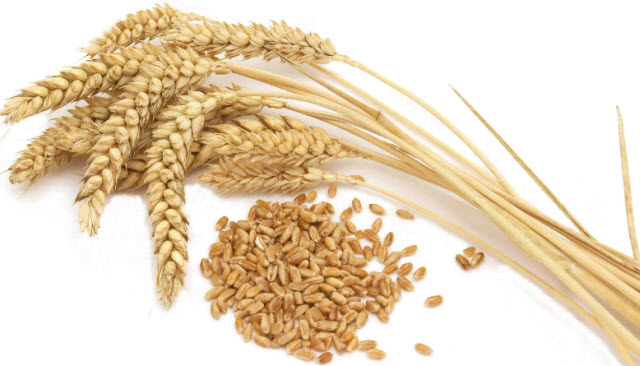When it comes to gluten allergy, many people tend to think that it's just a nickname of celiac disease or gluten sensitivity. Though sharing similar symptoms, they're quite different. Gluten allergy occurs when your body develops allergic reactions to a glycoprotein called gliadin. Gliadin and another protein glutenin help to form the gluten protein in wheat and other common grains like barley, rye, and oats.

Am I Allergic to Gluten?
One of the most common foods in our diet is wheat. Not only is it found in the pastas, breads, and baked goods we consume, but it is also an ingredient in many other processed foods. But how do you know if you have a gluten allergy? If you have any of the following symptoms, it could be a sign that you are.
Symptoms of a gluten allergy are similar to those in celiac disease and can include bloating, heartburn, abdominal pain, constipation, diarrhea, anxiety, anemia, and fatigue. Other symptoms may include:
• Unexplained weight loss.
• Mouth ulcers.
• Swelling of the lips.
• Rash
• Asthma
• Trouble breathing.
• Irritability
• Depression
• Osteoporosis.
• Anaphylactic shock (in extreme cases).
• Itchy skin and/or rash.
It's important for parents to monitor their child's symptoms if they suspect a gluten allergy. This allergy may go into remission only to return later in life.
Is It Celiac Disease?
Celiacdisease, unlike a gluten allergy where smaller traces of gluten might be tolerated, can't condone any amount of gluten at all. When people with celiac disease consume gluten, their immune systems become inflamed, damaging the lining of their small intestine. This restricts the nutrients from being absorbed and can lead to a sudden loss of weight and malnutrition. Although celiac disease shares some symptoms with other disorders, including gluten allergies, it's important that you be tested if you suspect you have the condition. Symptoms of celiac disease can be found in the following table:
| Symptoms in Children | Symptoms in Adults |
| Slow growth | Iron deficiency, anemia |
| Decreased appetite, failure to gain weight | Infertility, miscarriage |
| Chronic diarrhea, bloody stools | Joint pain |
| Chronic constipation | Osteoporosis |
| Nausea and vomiting | Arthritis |
| Abdominal bloating with pain | Depression, anxiety |
| Fatigue | Tingling in hands and feet |
| Depression, irritability | Seizures |
| Mouth ulcers | Erratic menstrual periods |
| Delayed puberty | Mouth ulcers |
| Itchy skin rash | Duhring's disease (skin disorder) |
What about Wheat Allergy?
 Am I allergic to gluten or is it a wheat allergy? Those who have a wheat allergy sometimes also experience rashes and gastrointestinal symptoms; however, they also experience more typical allergy symptoms, such as weeping eyes, or a runny nose. People oftentimes mistakenly refer to a wheat allergy as a gluten allergy, but a true wheat allergy does not necessarily involve gluten, meaning it's possible to be allergic to other components of the wheat plant. Symptoms of wheat allergy may include:
Am I allergic to gluten or is it a wheat allergy? Those who have a wheat allergy sometimes also experience rashes and gastrointestinal symptoms; however, they also experience more typical allergy symptoms, such as weeping eyes, or a runny nose. People oftentimes mistakenly refer to a wheat allergy as a gluten allergy, but a true wheat allergy does not necessarily involve gluten, meaning it's possible to be allergic to other components of the wheat plant. Symptoms of wheat allergy may include:
• Red, itchy, and watery eyes
• Nasal congestion
• Difficulty breathing
• Itchy rashes and/or hives
• Swelling of tongue, lips and/or face
• Abdominal pain
• Nausea, vomiting
• Diarrhea
The most dangerous symptom of a wheat allergy is anaphylaxis, a potentially life-threatening allergic reaction. Anyone experiencing anaphylaxis from a wheat allergy can find themselves wheezing, coughing, difficulty swallowing, an increase or decrease in heart rate, and they may experience a dangerous drop in blood pressure. Anaphylactic shock is a medical emergency, so if you or someone else experience these symptoms, seek medical attention immediately.
Test to Tell If You're Allergic to Gluten
 Am I allergic to gluten? You ask. Well, there're several tests for this. A gluten allergy is oftentimes difficult to diagnose. Many other conditions can create similar symptoms to gluten allergies, including celiac disease and gluten intolerance. Additionally, symptoms can vary in severity depending on the individual. The only way know for sure is to have yourself tested.
Am I allergic to gluten? You ask. Well, there're several tests for this. A gluten allergy is oftentimes difficult to diagnose. Many other conditions can create similar symptoms to gluten allergies, including celiac disease and gluten intolerance. Additionally, symptoms can vary in severity depending on the individual. The only way know for sure is to have yourself tested.
1. Elimination Diet
The first test used to ascertain whether someone has gluten allergies is with an elimination diet. With an elimination diet, people who suspect a gluten allergy removes foods that contain gluten, such as pasta, or wheat, from their diet for a length of time to determine if the symptoms are resolved. Unfortunately, an elimination diet will not completely rule out a gluten sensitivity, or celiac disease.
2. Blood/Skin Tests
A food allergy test such as a skin prick test, or pricking the skin with a needle or pin containing a small amount of the allergen can and do show gluten allergies. However, celiac/gluten intolerance is not an allergy, and the skin tests for allergies will not show it. There are blood tests for celiac/gluten intolerance, but there can still be some false negatives. Therefore, it’s usually followed up with stool antibody testing to see if you are throwing gluten antibodies into your stool.
3. IgE or Cell-Mediated Test
Another way to test for gluten allergies is a cell-mediated test or IgE test, which times the reactions to various skin tests or allergens. A stool test, along with a blood test for gluten intolerance, is usually recommended because it’s possible to test positive for a food allergy reading, but test negative for gluten sensitivity test for the grains that contain gluten, or the other way around. The reactions can vary by individual, from gastrointestinal (most common) to the skin and/or respiratory.
What to Do
If the diagnosis of gluten allergies is positive, and celiac disease has been eliminated as the cause of your symptoms, you can determine how much gluten you can allow in your diet. If you have gluten allergies, avoiding the gluten altogether might resolve the symptoms, leave you more energized, and with an improved quality of life. However, wheat is a predominant grain used in many products, and removing it entirely from your diet could be difficult. Because oats, barley, and rye contain gluten, the list of other grains becomes scant. Alternatives can include tapioca, corn, rice, amaranth, corn, rice, and quinoa.
